Savin, 21, has seven assists in 14 games with Charlotte this season. The 2012 fourth round pick (120th overall) skated on the Hurricanes’ top pair with Justin Faulk in Thursday’s practice, so expect him to make his NHL debut on Friday.

Savin, 21, has seven assists in 14 games with Charlotte this season. The 2012 fourth round pick (120th overall) skated on the Hurricanes’ top pair with Justin Faulk in Thursday’s practice, so expect him to make his NHL debut on Friday.

Petan served as a healthy scratch in the last two games and has only appeared in 14 of 20 games this season. Petan had just one goal in 14 games, so he heads to Manitoba for some more conditioning.

Warsofsky has been recalled after the Penguins received news that Olli Maatta would be sidelined for 3-4 weeks. Warsofsky had six points (2G / 4A) in 13 games with WBS at the time of his call-up. He will not dress on Thursday.

Theodore was recalled as a precaution in advance of Tuesday’s game. His services were not needed and Josh Manson (illness) should be healthy enough to play on Thursday, so they have sent Theodore back to San Diego.

Grenier has recorded seven points (2G / 5A) in 13 games with Utica this season. On Wednesday he will make his NHL debut because the Canucks want to get some size in the lineup vs. the heavy Jets. Grenier is 6-foot-5, 200 lbs. and is expected to debut on Vancouver’s second line.
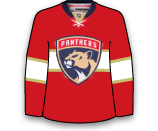
Shinkaruk played 9:35 TOI in his NHL debut on Monday. The Canucks wanted to get heavier for Wednesday’s game in Winnipeg so they swapped Shinkaruk for Alexandre Grenier.
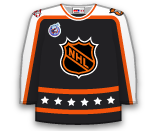
Stolarz served as Steve Mason’s backup on Wednesday because Michal Neuvirth was dealing with an upper-body injury. With Neuvirth back at practice this morning, Stolarz has been sent back to Lehigh Valley.

The Blue Jackets have a back-to-back on Friday and Saturday, so they want an extra forward with the team. Anderson has three goals and one assist in eight games with Lake Erie this season. He also has one career assist in six NHL games.

Jurco has been a healthy scratch since October 31st and has only appeared in four games this season. He has had a tough time cracking the Red Wings’ lineup so he will head to Grand Rapids for a maximum of two weeks.
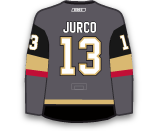
Stolarz, 21, has gone 5-3-1 with a 1.90 GAA and .930 SV% in the AHL this season. With Michal Neuvirth out with an injury, Stolarz has been recalled to back up Steve Mason on Tuesday.

Theodore, 20, was the 26th overall pick in 2013. The 6-foot-2, 186 lbs. blueliner has eight points (1G / 7A) in 13 games with San Diego this season. Theodore had 48 points (13G / 35A) in 43 games with Seattle (WHL) last season and 19 points (5G / 14A) in his first 22 career AHL games, so producing at the NHL level is the next step.

McKenzie has been out with a lower-body injury so he will head to the AHL to get some games under his belt and he will likely be one of the first forwards called up when Dallas is in need.
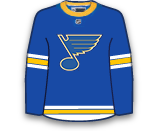
Keranen currently leads Iowa with eight points (4G / 4A) in 13 games this season. The 25-year-old could make his NHL debut on Tuesday.
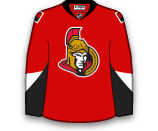
Grant had no points and a minus-3 rating in one games during his time with the Flames. He may have failed to record a point, but he was impressive in the face-off circle, winning 56.8% of the face-offs he took, tops on the team. His demotion suggests that Jonas Hiller is ready to be activated from IR.
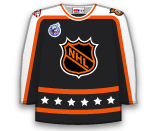
Galiev, 23, was 10 days into his 14 day conditioning stint. During his stint he appeared in five games, registering three goals over that span.
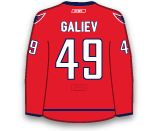
Bulmer has been like a yo-yo recently. He was recalled on Friday, served as a healthy scratch on Saturday, was sent down on Sunday and then called back up this morning. The 23-year-old defenseman has one goal and one assist in 14 games with Iowa this season.
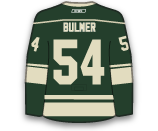
Welsh has five goals and three assists (eight points) in 11 games with Chicago this season. The 27-year-old has two career NHL points in 25 games between the Hurricanes and Canucks. There is no word whether he will make his Blues debut on Monday.

O’Connor, 23, has gone 0-5-1 with a 4.14 GAA and .859 SV% in six games with Binghamton (AHL) this season. It has been a struggle for O’Connor at the AHL level, so don’t expect him to get very much, if any playing time during his call up. He is expected to serve as Craig Anderson’s backup on Monday vs. the Red Wings.

Cunningham has five goals and four assists (nine points) in 12 games with Springfield this season. The 25-year-old winger has just seven career NHL points (3G / 4A) in 53 career NHL games between the Bruins and Coyotes.
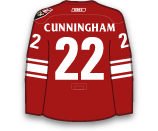
Faksa, 21, had one goal and one assist in 14 games with the Stars. He returns to Texas, where he has two goals in one game this season. His return to the AHL suggests that Patrick Eaves will return to the lineup on Tuesday.
